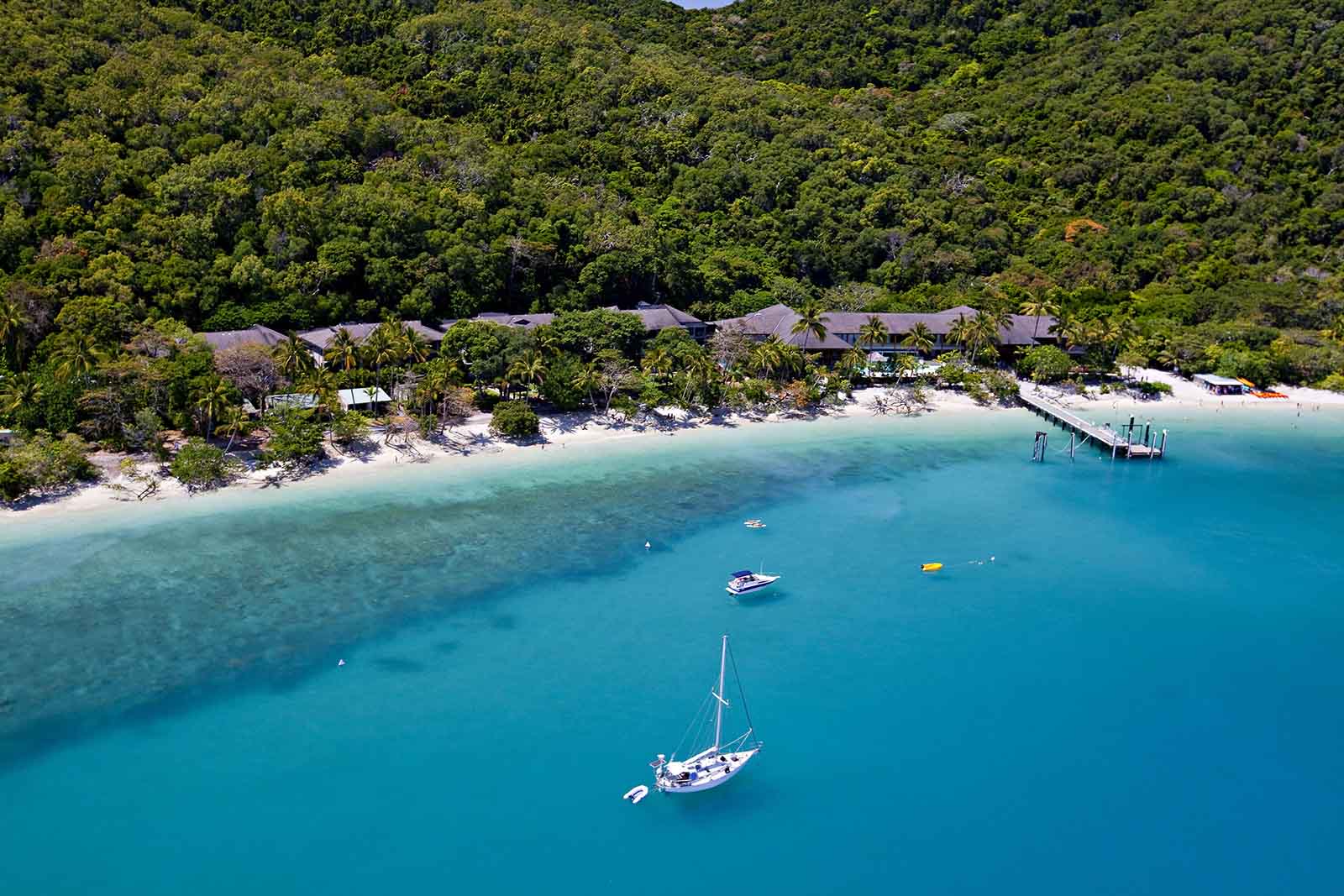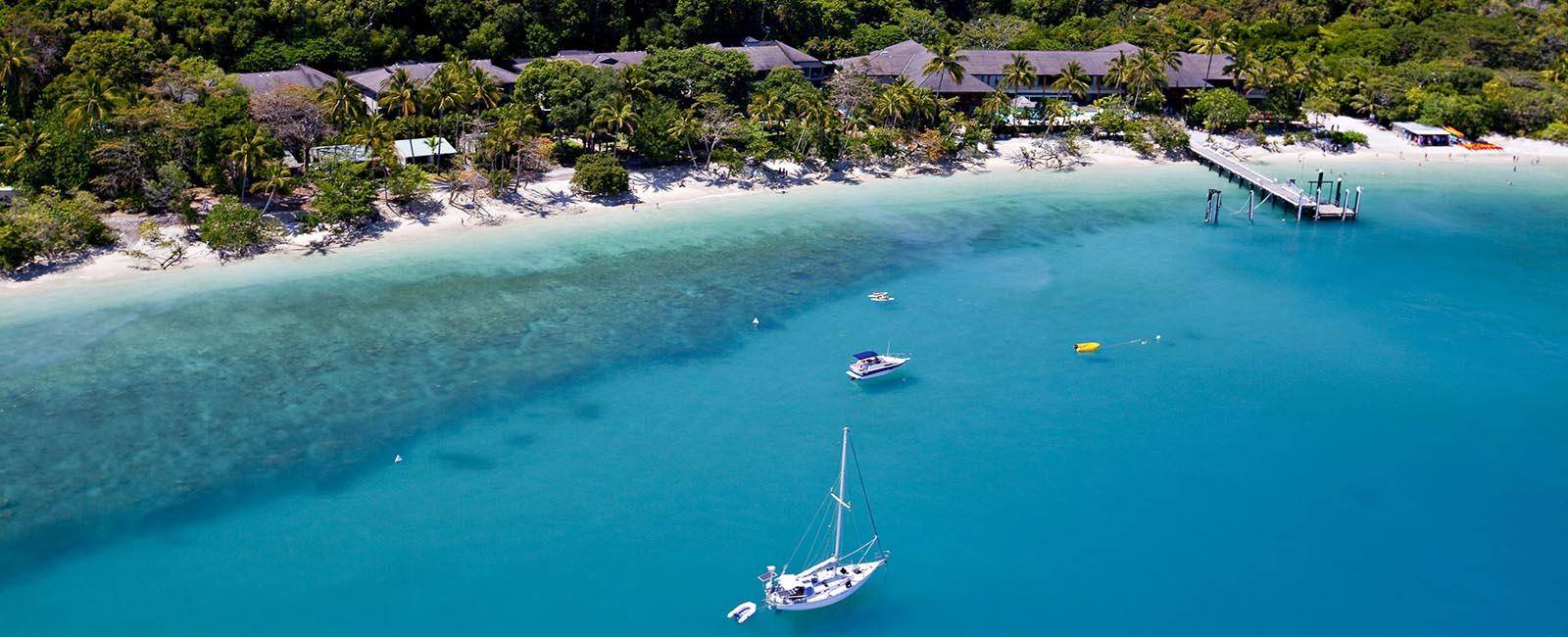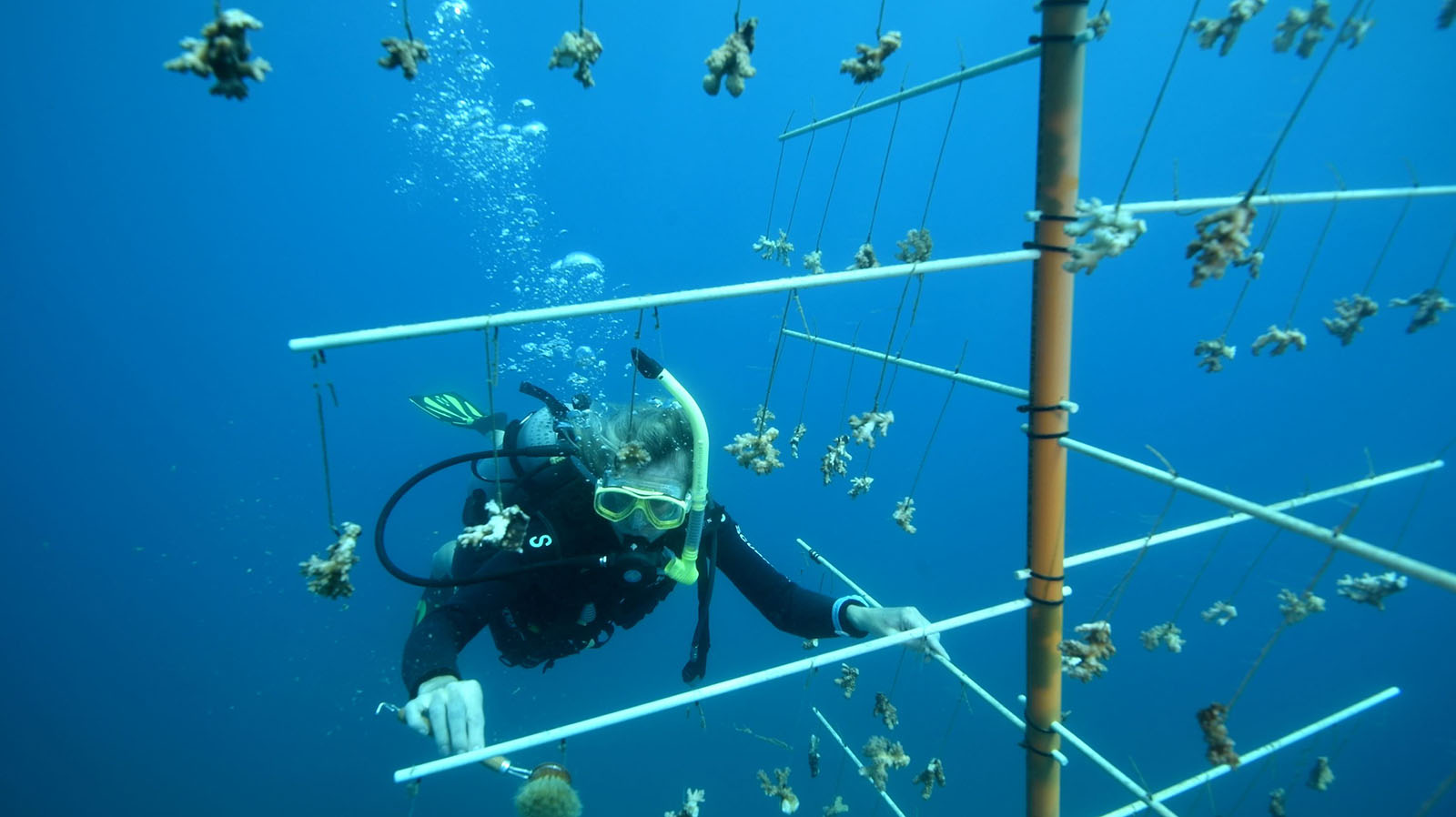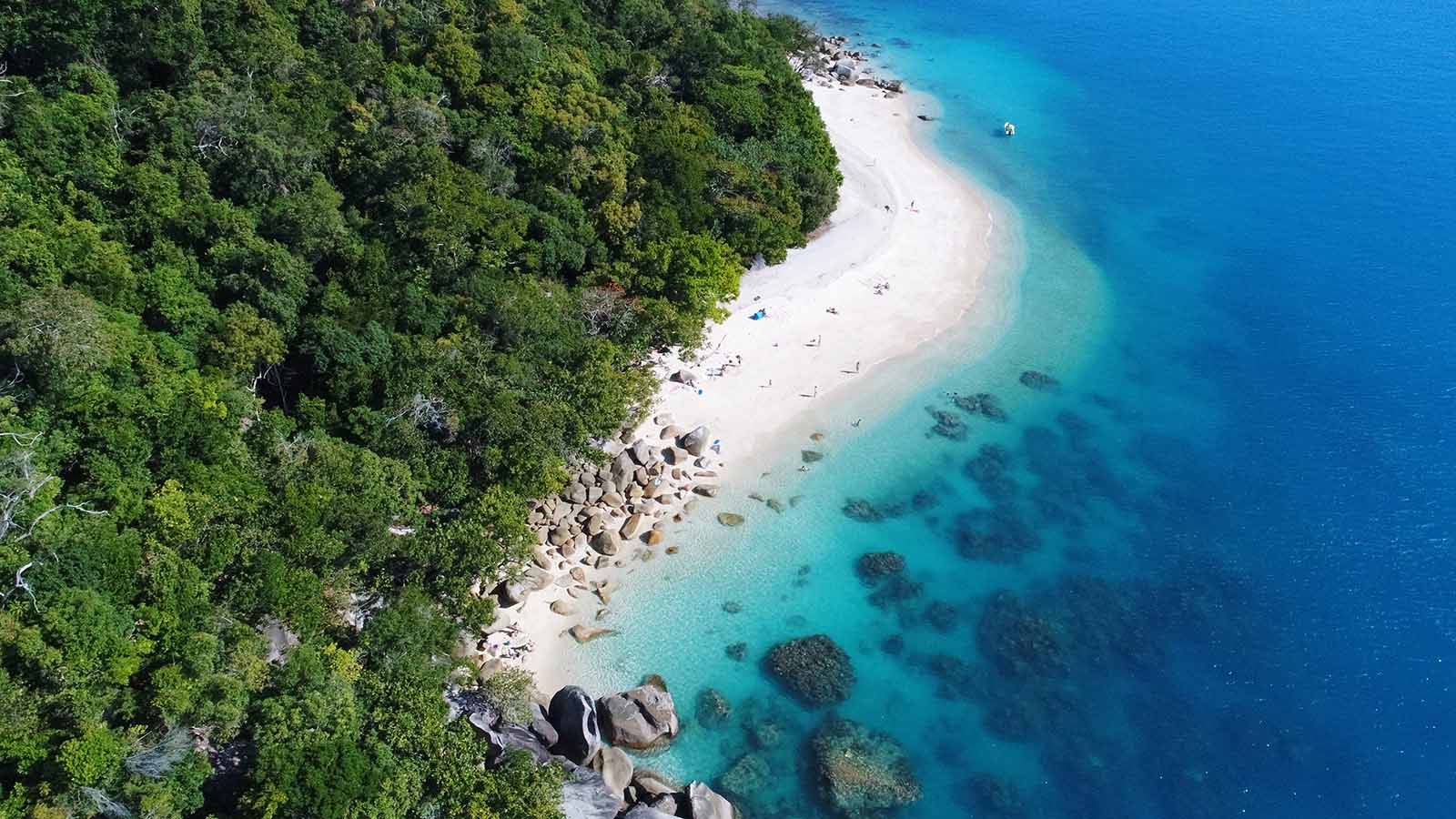
Fitzroy Island is an idyllic family holiday destination but below the surface its pristine waters are a breeding ground for new coral in an ambitious project to help regenerate the Great Barrier Reef.
Bouncing with tidal surges in the deep blue water off the tip of Fitzroy Island, 45 minutes offshore from Cairns, is a small forest of ‘Christmas trees’ that keeps on giving.
The specially-shaped structures are made with fibreglass rods and have been designed by scientists to create a home for resilient corals harvested from broken pieces which have survived coral bleaching and the effects of Cyclone Debbie a few years ago.
The restoration process is similar to taking cuttings from mature plants to grow new plants and finger-sized corals dangle from the tree’ ‘branches’ while growing underwater until they are ready for replanting. It's like an underwater coral nursery.
A first for the Great Barrier Reef
While the project is a first for the Great Barrier Reef, it has been done successfully in Singapore and Florida and the local version has already shown positive results. The 20 trees suspended in Welcome Bay’s waters about 100 metres from shore are safe from sediment and predators such as crown-of-thorns starfish and the nursery has more than doubled in size since it was established in December 2017.
So far about 2,000 corals have been planted on the reef around Fitzroy Island and, thanks to the recent boost of a $60,000 grant from green energy company Powershop, the Reef Restoration Foundation aims to establish two to three more coral nursery sites at nearby reefs during the next 12 months with an additional 40 to 70 trees. To date, over 300 trees have been planted back out onto the Great Barrier Reef.
The volunteers of the reef
Guests and visitors to Fitzroy Island can learn more about the project from Master Reef Guide and marine biologist Azri Saparwan who conducts the island’s nature-based tours and has been a volunteer assisting the coral regeneration project since its planning phase.
“I have volunteered on similar projects in the Maldives and Singapore so I am keen to see coral successfully grown here on the Great Barrier Reef,” he says.
“This island is my home, as I have been working at Fitzroy island Resort for three years, so I wanted to do something to help the reef here.”
Saparwan says he’s keen to give visitors a similar sense of understanding and belonging to the reef so they will help preserve its future. Each week he goes out to the coral nursery with a team of volunteers to check on its progress and collect data. Many of the volunteers come from the local dive community but some travel from as far afield as Perth to offer their help while on holiday.
Saparwan’s reef talk follows a tour of the island’s Turtle Rehabilitation Centre where more than 300 turtles have been nursed back to health and released, and a handful remain in the centre’s tanks, also monitored by a team of volunteers to help them on the road to recovery.
A special connection
Saparwan’s favourite, Julz, is a juvenile Green Sea Turtle that was a victim of illegal hunting off Green Island, near Cairns. She arrived at the centre 18 months ago, weighing only 12kg but is now a healthy 34kg and is due to be released soon when all her wounds have healed.
“The hardest thing is letting them go,” he says. “The coral, too, is growing well and it is really exciting to see them planted out in new colonies. It’s like waiting for your children to grow up and go out into the world.”
NEED TO KNOW
- Fitzroy Island is 45 minutes by ferry from Cairns.
- Visit for the day or stay overnight at Fitzroy Island Resort (there’s also a beachside campground for about 20 BYO tents).
- Snorkel straight from the beach to see marine life and coral in the shallows just metres from shore.
- Kayaks, stand-up paddleboards, snorkel and dive equipment are available for resort guests.
- The island’s Nudey Beach is not a nude beach (any more) but it has been named one of Australia’s best beaches for its white coral sand and surrounding rainforest. The beach is accessed from the resort via a winding 1.2-kilometre walking track which will have you scrambling up and down hills and between oversized boulders.
- A longer hike to the summit of the island reveals panoramic views and an insight to the island’s history.
- Would-be coral crusaders can contribute to the Reef Restoration project by adopting a coral.
GETTING THERE
PLAN YOUR TRAVEL



